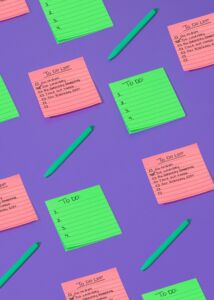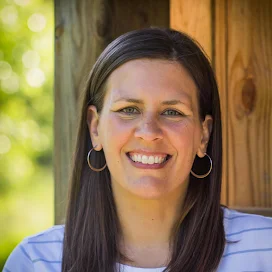Does the turn of the new year excite you? Do you think about what you want for your future? Or have you been living the same year repeatedly, much like Bill Murray’s character in Groundhog Day? You were created for a purpose, and it is not to repeat the same year over again. You can get clear on what you should do with a personal development plan.
Why You Need a Personal Development Plan
A personal development plan identifies your goals, strengths, and weaknesses. It uncovers what you need to learn or do to accomplish your goals. New skills will take you higher than you have ever been before in your personal and professional life. Plano Christian Counseling offers faith-based guidance to help individuals create and achieve their personal development goals.
The following are more benefits of creating a personal development plan.
 It motivates you to accomplish goals
It motivates you to accomplish goals
A personal development plan motivates you to accomplish goals that otherwise might be out of reach. It gets to the bottom of why you want to achieve a specific goal. When the tasks to reach the goal become challenging and you no longer feel motivated, the reason why you chose this goal will motivate you once more. A personal development plan keeps you focused on the reason behind the goal.
It teaches you goal setting principles
There is an art to setting goals; people who understand the principles and follow through achieve more than those who make vague statements. Anyone can declare that they want to do something, but it will probably never happen if they do not make their goal specific and time bound.
It helps identify your strengths and weaknesses
To reach the next level, you must honestly assess your strengths and weaknesses. You will also need to discern what strengths you want to build upon and what weaknesses you need to tackle first. For example, if you know you could change your life by being more consistent on daily tasks but struggle with time management, you will identify time management and consistency as weaknesses you need to work on.
It assists in identifying needed skills
Once you have identified your strengths and weaknesses, you will better understand the skills you will need to learn to reach your goals. New skills can transform your life.
For example, if you want to work in management or be a leader in your church ministry but shy away from giving speeches, then you should consider public speaking a skill you need to master. It might seem scary initially but imagine how much you could accomplish once you are no longer afraid to talk to dozens, hundreds, or thousands of people.
 It creates a blueprint to follow
It creates a blueprint to follow
A personal development plan outlines the blueprint you need to follow to reach your goals. It takes the skills you need and the tasks and breaks them down into bite-size actionable steps. You will no longer feel paralyzed with fear or overwhelmed when you think about tackling big goals because you will have a step-by-step plan laid out.
It builds confidence and self-esteem
When you have a plan for achieving your goals, you will notice that your confidence and self-esteem soar. Your confidence grows as you continue to accomplish your goals and reach higher. When was the last time you felt that superhero type of confidence? A personal development plan could help you get there.
How to Get Started with a Personal Development Plan
Writing a personal development plan is not as difficult as you may think. You might feel overwhelmed thinking about writing a blueprint for reaching your goals, but once you learn the basics, you will find that you need a plan for each one of your goals in every area of your life.
Identify your why
Your why is the reason behind your goals. It is what will push you when your motivation wanes. For example, if you know you need to get into shape, ask yourself why. Why do you want to get healthy and fit? Write down the answer, but do not stop there. Ask yourself why again repeatedly until the answer feels honest and raw. This is the real reason behind your goals.
For the above example, in the beginning, you may want to be healthy and fit to look better in your clothes, but by the time you complete this step, you may realize you want to be healthy to manage your high blood pressure and live long enough to see your grandchildren become grandparents. Make your answer as emotional as you can.
Make a list of strengths and weaknesses
Your strengths and weaknesses determine your next steps. You need a realistic view of what comes naturally to you and what you must work toward. There will be some skills that are better left for delegation.
For example, if you want to publish your novel independently, you may note that writing and formatting are your strengths, but cover design and marketing are your weaknesses. Take a look at these and be honest with yourself. If you are not a graphic design master and do not feel you have the talent, consider hiring a cover designer and focusing your learning on marketing skills.
Focus on one skill to move forward
 From your list of strengths and weaknesses, choose one skill that will make the most difference toward reaching your goals. Although you may have several skills you believe you need to learn, by focusing on one skill, you can throw 100% of your effort into learning something new.
From your list of strengths and weaknesses, choose one skill that will make the most difference toward reaching your goals. Although you may have several skills you believe you need to learn, by focusing on one skill, you can throw 100% of your effort into learning something new.
Take each skill individually until you become proficient before moving on to the next. Using the example above of an aspiring indie author, the writer wants to learn marketing skills. However, under this broad category are several smaller categories (social media, ads, newsletters, book signings, etc.). By choosing one subcategory at a time, the writer is more likely to master an area and see improvement before moving on to the next.
Declare your S.M.A.R.T. goals
Each of your goals should meet the S.M.A.R.T. goal criteria to ensure you set yourself up for success. The acronym S.M.A.R.T. stands for:
- Specific
- Measurable
- Attainable
- Relevant
- Timely
As you write your goal, make it specific, listing what you want in detail.
Make it measurable. If it is weight, how many pounds or kilograms? If it is money, attach a dollar amount.
 Is your goal attainable and realistic? If it is to lose weight, it is probably unrealistic to set a goal to lose 100 pounds in three months. What number would work and keep you healthy? Maybe twenty-four pounds in three months? Do not be fooled by trying to take on too much or wanting instant gratification. The time will pass anyway. Choosing to tackle a goal slowly and steadily is better than being too fast and burning out.
Is your goal attainable and realistic? If it is to lose weight, it is probably unrealistic to set a goal to lose 100 pounds in three months. What number would work and keep you healthy? Maybe twenty-four pounds in three months? Do not be fooled by trying to take on too much or wanting instant gratification. The time will pass anyway. Choosing to tackle a goal slowly and steadily is better than being too fast and burning out.
Are the tasks relevant to the goal and your values? If they do not line up, you may end up spinning your wheels instead of making progress.
Set deadlines. We tend to make a task last as long as the time we give it. Have you ever noticed that if you only have one hour to clean the house, you get the job done? But if you have a long weekend to clean the house, you can make the task last all three days? Set the deadlines and keep to them.
List the steps you need to take
Reverse engineer your goals. List the tasks you need to learn, along with any other items you need to get done to accomplish your goals. Then, break these steps down further into manageable tasks. Make sure you do at least one of the tasks every day.
Next Steps for Creating a Personal Development Plan
Once you understand the basics of writing a personal development plan, you will have your blueprint for reaching your goals. Now, you need to implement the steps and take action.
If you need help writing your personal development plan, creating the proper steps, or motivating yourself to action, reach out to our office today at Plano Christian Counseling in Texas to schedule an appointment with a Christian counselor in Plano, Texas specializing in personal and professional development.
“Weekly Planner”, Courtesy of Jess Bailey, Unsplash.com, CC0 License; “2Do”, Courtesy of Katelyn Perry, Unsplash.com, Unsplash+ License; “Journaling”, Courtesy of Marcos Paulo Prado, Unsplash.com, CC0 License; “New Year Resolutions”, Courtesy of Tim Mossholder, Unsplash.com, CC0 License
-
McCartney Paul: Author
As your counselor, I will meet you wherever you are and walk alongside you toward growth and positive change. I offer professional Christian counseling for children, teens, couples, adult individuals, families, and groups. My practice benefits from t...
-
Kate Motaung: Curator
Kate Motaung is the Senior Writer, Editor, and Content Manager for a multi-state company. She is the author of several books including Letters to Grief, 101 Prayers for Comfort in Difficult Times, and A Place to Land: A Story of Longing and Belonging...
DISCLAIMER: THIS ARTICLE DOES NOT PROVIDE MEDICAL ADVICE
Articles are intended for informational purposes only and do not constitute medical advice; the content is not intended to be a substitute for professional medical advice, diagnosis, or treatment. All opinions expressed by authors and quoted sources are their own and do not necessarily reflect the opinions of the editors, publishers or editorial boards of Stone Oak Christian Counseling. This website does not recommend or endorse any specific tests, physicians, products, procedures, opinions, or other information that may be mentioned on the Site. Reliance on any information provided by this website is solely at your own risk.






